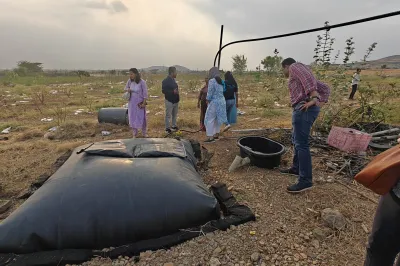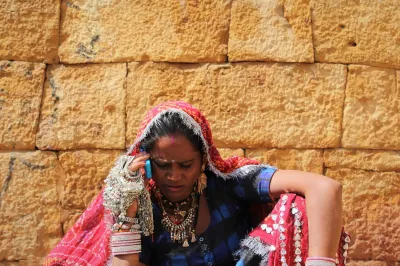The Biggest Social Experiment on the Planet

Across India, in its rural villages and urban centers, an amazing social experiment is being rolled out. Millions of Indians—day laborers, beggars, office workers, rich and poor—are lining up to give their fingerprints to register for a government-issued ID. For many, it’s the first time they will have a formal ID.
Hundreds of millions of Indians today have no formal ID. As a result, they are unable to open a bank account, buy a SIM card, and most critically, claim the government welfare payments they are entitled to receive.
In August 2009 the Government of India set out to address this issue with an ambitious project led by an ambitious man–Infosys founder and software billionaire, Nandan Nilekani. Using the latest biometric technology Aadhaar, as the program is known (it means “foundation” in Hindi), aims to provide a unique ID to all 1.2 billion people who live in the country.
In last week’s budget, Rs 1,758 crore (US$343 million) was allocated for the Unique Identity Authority of India (U.I.D.A.I.), a significant boost for Nilekani’s aim to enroll half the population by 2012.
In this video, the Deputy Director General of the U.I.D.A.I., Ashok Singh, discusses the goals of this ambitious project, and how financial inclusion was built into its design. The U.I.D.A.I. has been enrolling a mind-boggling million people a day. This year’s budget allocation will allow it to increase enrolments from 200 million today to 600 million. If successful, India would find itself at the forefront of citizen ID technology, leapfrogging just about every developed country in the world.
Recent reports suggest that welfare payments are what’s leading a sharp drop in Indian poverty. The Unique ID program is at the heart of an ambitious plan to improve the delivery of welfare services. And Prime Minister Manmohan Singh has made it clear that Aadhaar will be the underlying platform for all government services.
It also promises financial inclusion. Every new enrollee is offered a bank account, and to date 84% of people have taken up the offer. With its open source philosophy, Aadhaar is also considered an opportunity for private companies to innovate, and to find new ways to use the platform to benefit their customers.
The program is not without its critics. Civil society organizations have expressed concerns about privacy issues, and the project has faced challenges that have gone all the way to the Supreme Court. But Singh is confident those fears will be put to rest once the program is in operation. He also says that India’s ID effort is unique in motivation. Most governments that create ID programs are driven by security concerns. In contrast, the motivation for the Government of India is making growth inclusive, closing the gap between rich and poor.
For India’s growth to be sustainable, says Singh, the poor must benefit. And Unique ID is an instrument to make them part of India’s amazing growth story.




Comments
A great blog – and the answer
A great blog – and the answer to the question in the title is “YES! (probably)”. There are still hurdles and challenges, and nasty ground realities around who controls which households get on the lists for state benefits or MNREGA guaranteed employment schemes (and thus take a cut of the proceeds).
But the fact that UID was front and centre of the budget speech (after some time in the cold) said a great deal. See MicroSave’s analysis of this and related regulatory/policy changes here: http://www.microsave.net/sites/files/technicalBriefs/policybrief/PB_1_E…
For analysis of UID’s potential role in financial inclusion in India see: http://www.microsave.net/briefing_notes/india-focus-note-70-leveraging-…
and
http://www.microsave.net/briefing_notes/india-focus-note-69-uid-and-fin…
This is certainly a great
This is certainly a great initiative, but it is not the first one of its kind. In neighbouring Pakistan, nearly 75 million unique ID card have been issued already to citizens over 18 years of age and all government and private sector transactions are based on these ID cards.
Add new comment